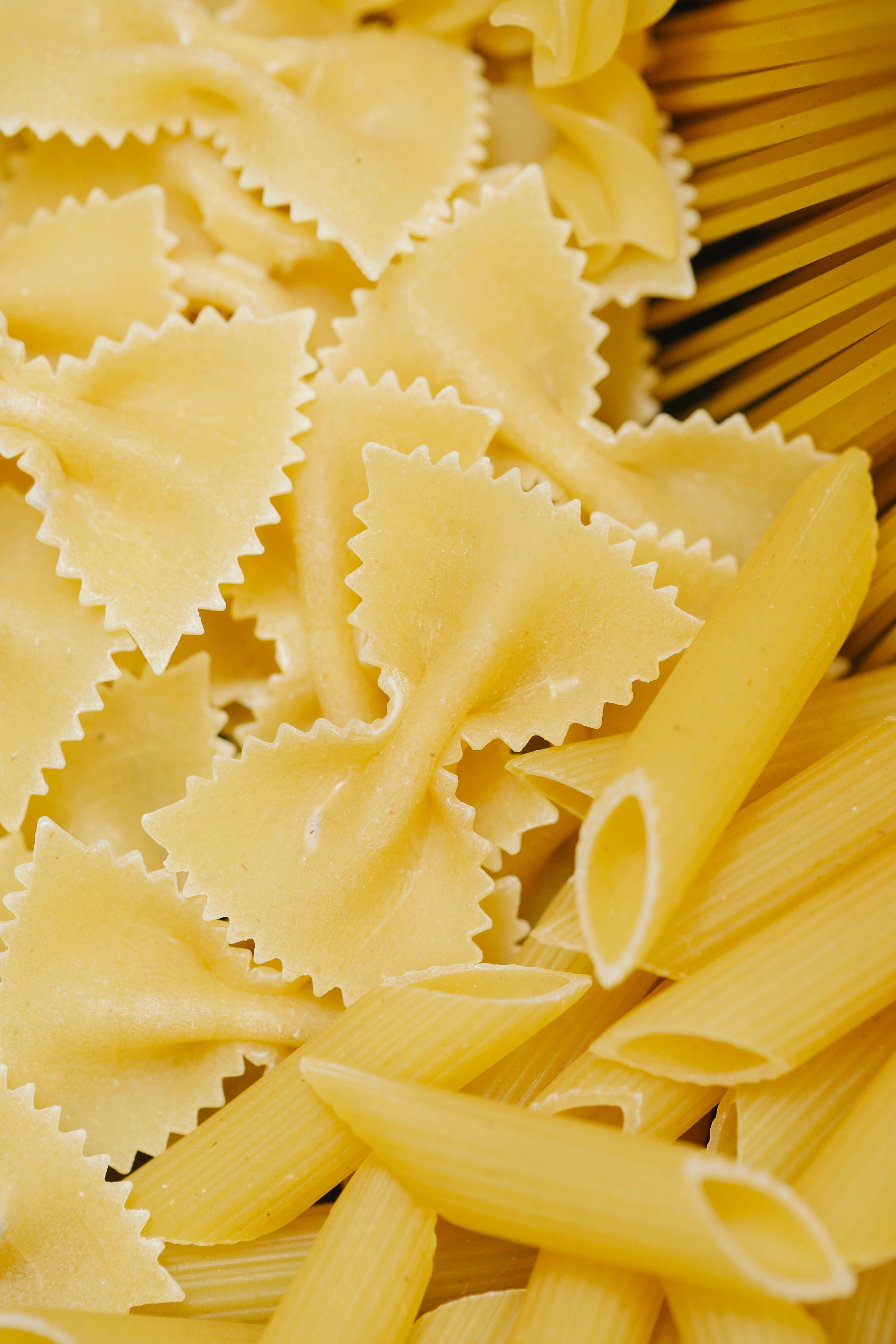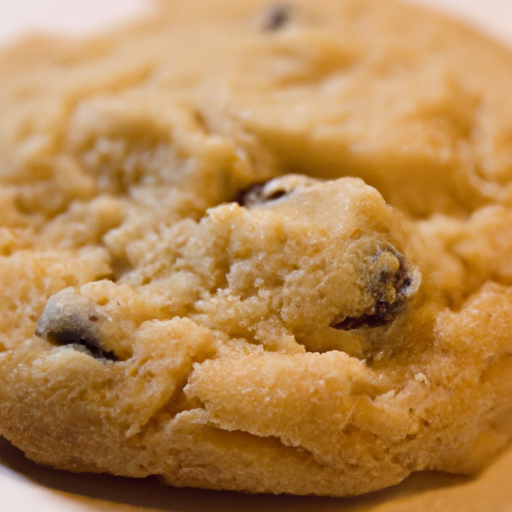Have you ever wondered why cookies turn golden brown, cakes rise, and bread becomes fluffy? The secret lies in the science of baking. In the kitchen, chemistry plays a vital role in transforming simple ingredients into delectable treats. From the Maillard reaction that gives baked goods their delightful aroma and color to the interaction between baking powder and acids that leads to a light and airy texture, understanding the science behind baking opens up a whole new world of possibilities in the culinary realm. Explore the fascinating world of baking as we unravel the mysteries and intricacies of the kitchen through the lens of chemistry.

The Role of Chemistry in Baking
Baking is not just an art, but also a science. The chemistry involved in the process of baking plays a crucial role in determining the final outcome of your baked goods. From understanding the fundamentals of chemical reactions to the role of specific ingredients, chemistry provides the foundation for successful and delicious bakes. In this article, we will explore the various aspects of chemistry in baking and how they contribute to the creation of mouthwatering treats.
Understanding the Fundamentals
Before diving into the specifics, it’s important to have a basic understanding of the chemical reactions that occur during baking. Baking is essentially a series of chemical reactions that transform raw ingredients into a finished product. These reactions involve the interaction of various compounds, such as proteins, carbohydrates, and fats, resulting in the formation of complex flavor, texture, and structure.
Chemical Reactions in Baking
Chemical reactions play a pivotal role in the baking process. One of the most important chemical reactions in baking is known as the Maillard reaction. This reaction occurs when proteins and sugars are exposed to heat, resulting in the browning and development of unique flavors. The Maillard reaction is responsible for the golden-brown crust on bread and the rich caramelized flavor in pastries.
Another critical chemical reaction is fermentation, which occurs when yeast metabolizes sugars to produce carbon dioxide gas. This gas gets trapped in the dough, causing it to rise and create a light and fluffy texture. Understanding these chemical reactions allows bakers to manipulate their ingredients and techniques to achieve the desired results.
Role of Ingredients
Each ingredient used in baking serves a specific purpose in creating the final product. For example, flour provides structure due to the protein gluten, which develops when flour is mixed with liquid. Gluten gives bread its elasticity and allows it to rise. Various types of flour, such as bread flour and cake flour, have different levels of gluten, which affects the texture of the final product.
Sugar not only adds sweetness but also contributes to texture and browning. It helps retain moisture and promotes tenderness in baked goods. Fats, such as butter and oil, play a crucial role in providing flavor and moisture while also contributing to the tenderness and richness of the final product.
Understanding the role of each ingredient and how they interact with each other can help bakers make informed choices and adjustments to achieve the desired outcome.
The Importance of Measurements
In baking, precision and accuracy are key. The right measurements ensure consistent results and prevent potentially disastrous outcomes. Baking is a science that requires exact measurements to achieve the right balance of ingredients and ensure the proper chemical reactions occur.
Precision and Accuracy
Precision in baking means using the correct measurements, whether it’s grams, ounces, or teaspoons. Accurate measurements guarantee consistent results, especially when it comes to ratios and proportions. A slight deviation in measurements can significantly affect the texture, flavor, and overall quality of your baked goods.
Investing in a good set of measuring tools, such as scales and measuring cups, is fundamental for achieving precision and accuracy in baking. Measuring ingredients by weight is often preferred over volume measurements, as it eliminates potential inconsistencies that can occur when ingredients are packed differently.
Weight vs. Volume Measurements
While many home bakers are familiar with using volume measurements, such as cups and tablespoons, professional bakers often rely on weight measurements for greater accuracy. The weight of an ingredient remains constant, whereas its volume can vary depending on factors such as humidity, temperature, and the way it is packed.
By using weight measurements, bakers can ensure consistent results every time they bake. This level of precision is particularly crucial in more delicate recipes, such as macarons or soufflés, where even a minor difference in ingredients can lead to a failed attempt.
Significance of Ratios
Understanding ratios is another important aspect of baking. Ratios represent the relative proportions of ingredients in a recipe. They ensure that the right balance of flavors, textures, and chemical reactions occur. Ratios can be as simple as the butter-to-flour ratio in a shortbread recipe or as complex as the ratios of flour, sugar, eggs, and fats in a cake recipe.
Knowing the basic ratios allows bakers to experiment with flavors and textures while maintaining the integrity of the recipe. It also provides a blueprint for creating new recipes or adjusting existing ones to suit personal preferences.

Leavening Agents
Leavening agents are essential components in baking that create the light and airy texture we associate with baked goods. There are two main categories of leavening agents: chemical leavening agents and biological leavening agents.
Introduction to Leavening
Leavening refers to the process of creating bubbles or air pockets in the dough or batter, which causes it to rise. This rising action gives baked goods their characteristic lightness and softness.
Chemical Leavening Agents
Chemical leavening agents include ingredients such as baking powder and baking soda. These agents release carbon dioxide gas when they come into contact with moisture and acidic ingredients in the recipe. The gas bubbles expand during baking, causing the dough or batter to rise.
Baking powder contains a combination of a base (usually baking soda) and an acid (such as cream of tartar). When combined with moisture, the acid and base react to produce carbon dioxide gas. Baking soda, on the other hand, is purely alkaline and requires an acidic ingredient in the recipe to create the necessary chemical reaction.
Biological Leavening Agents
Unlike chemical leavening agents, biological leavening agents rely on the action of living organisms to produce gas and raise the dough. Yeast is the most common biological leavening agent used in baking. It metabolizes sugars and produces carbon dioxide gas as a byproduct. The gas gets trapped in the dough, creating pockets that cause it to rise.
Using biological leavening agents like yeast requires more time and patience, as the dough needs to go through a fermentation process to activate the yeast. This process allows for more complex flavors to develop and results in a different texture compared to baked goods leavened with chemical agents.
Understanding the different leavening agents and how they work can help bakers choose the right one for their desired outcome and experiment with various textures and flavors.
How Heat Transforms Baked Goods
Heat is a key element in the baking process that brings about remarkable transformations in baked goods. From the initial rise to the development of desirable textures and flavors, understanding the science of heat transfer is crucial for successful baking.
The Science of Heat Transfer
Heat transfer refers to the movement of thermal energy from a hot substance to a cooler one. In baking, heat is transferred through three main methods: conduction, convection, and radiant heat.
-
Conduction is the transfer of heat through direct contact. It occurs when the baking pan absorbs heat and transfers it to the dough or batter, causing it to cook.
-
Convection is the transfer of heat through the movement of a heated fluid, such as air or steam. In an oven, hot air circulates and transfers heat to the surface of the baked goods.
-
Radiant heat refers to the direct transfer of heat through infrared radiation. It occurs when the heat source, such as the oven’s heating elements, emits electromagnetic waves that heat up the surface of the food.
Understanding these different methods of heat transfer allows bakers to adjust baking times, temperatures, and oven placement to achieve the desired results.
Effects of Different Temperature Ranges
The temperature at which baked goods are baked can significantly impact their texture, appearance, and flavor. Different temperature ranges have different effects on the chemical reactions and physical changes that occur during baking.
-
Low temperatures (250°F to 300°F) are often used for delicate baked goods such as meringues, where the goal is to dry and crisp them without browning.
-
Moderate temperatures (325°F to 375°F) are commonly used for most baking recipes. This range allows the baked goods to cook through evenly while developing desirable color, texture, and flavors.
-
High temperatures (400°F and above) are typically used for bread and pastries that benefit from a quick rise and a deep, golden crust.
Understanding the effects of temperature ranges allows bakers to tailor their baking techniques and achieve the desired outcome for different recipes.
Browning and Caramelization
Browning and caramelization are two fascinating results of heat application in baking. Browning occurs when proteins and sugars undergo the Maillard reaction, resulting in the formation of complex flavors and a desirable golden-brown color. Caramelization, on the other hand, is the gradual breakdown of sugar molecules, resulting in a rich, nutty flavor and a deep amber color.
Achieving the perfect balance of browning and caramelization can enhance both the flavor and appearance of baked goods. By controlling oven temperature and the length of time certain ingredients are exposed to heat, bakers can achieve the desired level of browning and caramelization, creating visual appeal and depth of flavor in their creations.

Understanding Gluten Formation
Gluten, a protein found in wheat and other grains, plays a crucial role in the structure and texture of baked goods. Understanding gluten formation is essential for achieving the desired texture and ensuring success in baking.
The Role of Gluten
Gluten is formed when two proteins present in wheat flour, gliadin and glutenin, combine and form a network of strands. This network provides structure and elasticity to the dough, allowing it to trap gases produced during leavening and create a light and airy texture.
The formation of gluten is particularly important in bread baking, where a strong and elastic gluten network is desirable to support the expansion of the dough as carbon dioxide gas is released. In other baked goods, such as cakes and pastries, a more delicate and tender texture is desired, requiring a lower level of gluten development.
Gluten Development
The development of gluten primarily occurs during the mixing and kneading processes. By adding liquid to flour, the proteins gliadin and glutenin interact and form gluten strands. Kneading the dough further strengthens the gluten network, creating a more robust structure.
Over-kneading the dough can lead to excessive gluten formation, resulting in a dense and chewy texture. On the other hand, under-kneading can result in a weak gluten network and a crumbly texture. Achieving the right balance of gluten development is crucial for achieving the desired texture and structure in different baked goods.
Gluten-Free Baking
For individuals with gluten sensitivities or celiac disease, the presence of gluten in baked goods can cause adverse reactions. Fortunately, there are various gluten-free alternatives available that can mimic the texture and structure provided by gluten.
Gluten-free baking often involves using a combination of alternative flours, such as rice flour, almond flour, or tapioca flour, along with binders such as xanthan gum or psyllium husk. These ingredients help create a structure and texture similar to that of gluten-based baked goods, ensuring that those with gluten restrictions can still enjoy delicious treats.
Understanding gluten formation and gluten-free alternatives allows bakers to accommodate various dietary needs and preferences without compromising on taste and texture.
Emulsifiers and Stabilizers
Emulsifiers and stabilizers are ingredients commonly used in baking to enhance the texture and stability of baked goods. They play vital roles in achieving the desired consistency, appearance, and shelf life of various treats.
Introduction to Emulsifiers
Emulsifiers are substances that help mix and stabilize ingredients that would otherwise separate, such as oil and water. In baking, common emulsifiers include egg yolks, lecithin, and mono- and diglycerides. These ingredients prevent oil and water from separating, resulting in a smooth and homogenous batter or dough.
Benefits in Baking
Emulsifiers provide several benefits in baking. They improve texture and tenderness by creating a fine and uniform crumb structure. They also enhance the shelf life of baked goods by preventing staling and reducing the likelihood of microbial growth.
Furthermore, emulsifiers contribute to the overall stability of batters and doughs, allowing them to withstand the rigors of mixing, shaping, and baking. This stability ensures that the final product maintains its desired shape, texture, and volume.
Importance of Stabilizers
Stabilizers, as the name suggests, help stabilize the structure and texture of baked goods during and after baking. Common stabilizers used in baking include xanthan gum, guar gum, and gelatin. These ingredients help enhance the viscosity, elasticity, and volume of batters and doughs, resulting in improved texture and structure.
Stabilizers also play a crucial role in preventing ingredients from separating, such as preventing fruit fillings from becoming watery or ice cream from developing ice crystals. By maintaining consistency and preventing undesirable changes, stabilizers ensure that baked goods have a desirable texture and appearance.
Understanding the role of emulsifiers and stabilizers allows bakers to manipulate the texture and stability of their creations, resulting in more consistent and visually appealing baked goods.
Role of Fat in Baking
Fat is an essential ingredient in baking that contributes to the flavor, texture, and overall quality of baked goods. Understanding the different types of fats and their functions allows bakers to make informed choices and achieve the desired outcome in their recipes.
Types of Fats
There are several types of fats commonly used in baking, including butter, margarine, shortening, and oils. Each type of fat has distinct characteristics that can significantly impact the final product.
Butter is a popular choice for its rich flavor and creamy texture. It adds a distinct richness to baked goods and helps create a tender and moist crumb. However, butter also contains water and milk solids, which can affect the structure and texture of some baked goods.
Margarine and shortening, on the other hand, are solid fats that are often used as substitutes for butter. They have a higher melting point, which can result in a different texture and mouthfeel in the final product. Margarine is typically made from vegetable oils, while shortening is a hydrogenated vegetable oil.
Oils, such as canola oil, vegetable oil, or olive oil, are liquid fats that contribute moisture and tenderness to baked goods. They are often used in recipes where a lighter texture is desired, such as cakes and muffins.
Functions in Baking
Fat serves several essential functions in baking. It provides moisture, tenderness, and richness to the final product. Fat coats the flour particles, creating a barrier that inhibits gluten formation and allows for a more tender crumb.
In addition, fat contributes to the flavor of baked goods, providing a desirable richness and depth. It helps evenly distribute heat during baking, promoting even browning and preventing excessive drying.
Furthermore, fat plays a crucial role in creating the desired texture of various baked goods. In cookies, fat contributes to spreading and producing a chewy texture. In pie crusts, fat creates a flaky and tender crust. The choice and quantity of fat in a recipe can significantly impact the texture and overall quality of the final product.
Texture and Flavor Enhancement
Fat is a key ingredient for achieving the desired texture and flavor in baked goods. It adds moisture, tenderness, and richness while contributing to the overall structure and mouthfeel. Understanding the role of fat in baking allows bakers to make informed choices and create delicious treats that cater to specific preferences.
The Chemistry of Sugar
Sugar is a fundamental ingredient in baking that not only adds sweetness but also contributes to flavor, texture, and color development in baked goods. Understanding the chemistry of sugar is essential for achieving the desired results and ensuring the optimal balance of flavors.
Sweetness and Flavor Enhancement
Sugar is known for its ability to add sweetness to baked goods. It stimulates the taste buds and enhances the perception of flavors. However, sugar also plays a crucial role in bringing out the natural flavors of other ingredients.
Sugar can act as a flavor enhancer, intensifying the taste of ingredients such as chocolate, fruits, and spices. It balances out acidity, counters bitterness, and adds depth to the overall flavor profile. The type and amount of sugar used can significantly impact the taste experience of the final product.
Effects on Browning and Moisture
Sugar contributes to the browning and caramelization of baked goods. As mentioned earlier, the Maillard reaction occurs between proteins and sugars under heat, resulting in the formation of complex flavors and a desirable golden-brown color. Sugar provides a source of reducing sugars needed for this reaction, enhancing both taste and appearance.
Furthermore, sugar helps retain moisture in baked goods, preventing them from becoming dry and stale. Sugar molecules have a hygroscopic nature, meaning they attract and hold onto water molecules. This moisture retention contributes to the tenderness, freshness, and shelf life of baked goods.
Caramelization and Maillard Reaction
Caramelization is the gradual breakdown of sugar molecules under high heat, resulting in a rich, nutty flavor and a dark amber color. This reaction occurs when sugar is exposed to temperatures above its melting point and continues until the sugar molecules have completely broken down.
The Maillard reaction, on the other hand, occurs between amino acids (proteins) and reducing sugars. It is responsible for the desirable browning and flavor development that occurs during baking. The Maillard reaction starts at lower temperatures and is more common in baked goods due to the presence of proteins.
By understanding the chemistry of sugar, bakers can manipulate the amount and type of sugar used to achieve the desired sweetness, flavor enhancement, browning, and moisture retention in their creations.
Understanding Food Acids
Food acids are important components in baking that contribute to flavor balance, pH balance, and the overall success of baked goods. Understanding the different types of food acids and their roles allows bakers to achieve a harmonious balance of flavors and ensure optimal results.
Types of Food Acids
There are various types of food acids used in baking, each with its own distinct flavor and properties. Some common food acids include citric acid, tartaric acid, malic acid, and acetic acid.
Citric acid is naturally present in citrus fruits and adds a tangy and acidic taste to baked goods. It helps enhance the flavors of other ingredients and provides a refreshing quality.
Tartaric acid is found in grapes and is commonly used in baking powder. It helps activate the leavening agents and contributes a slightly sour taste.
Malic acid is naturally present in fruits such as apples and contributes a tart and tangy flavor. It is often used in combination with other acids to achieve the desired level of acidity.
Acetic acid is commonly found in vinegar and imparts a sharp and acidic taste. It is used sparingly in baking due to its potent flavor.
Role of Acids in Baking
Food acids play several important roles in baking. They contribute to flavor balance by adding acidity and contrasting sweetness. The tartness or sourness provided by food acids can help harmonize the overall taste profile and prevent the baked goods from becoming too cloying.
Acids also interact with other ingredients to initiate chemical reactions. For example, acids react with baking soda to release carbon dioxide gas, resulting in the leavening of the dough or batter. This gas expansion creates a light and airy texture.
Furthermore, food acids influence the pH balance of the dough or batter, affecting the appearance, flavor, and texture of the final product. pH balance is crucial for achieving optimal conditions for yeast fermentation, gluten development, and the activity of enzymes that contribute to texture and flavor.
pH Balance and Balance of Flavors
Maintaining the right pH balance ensures that the chemical reactions necessary for successful baking occur at their optimal rates. It also determines the balance of flavors in baked goods. Different acids contribute precise flavors and can enhance the taste of fruits, nuts, chocolates, and other ingredients.
By understanding the role of food acids and their impact on pH balance and flavor balance, bakers can create harmonious and delicious treats that are well-balanced and satisfying.
The Science Behind Texture
Texture is a key element in the enjoyment of baked goods. The science behind texture involves both physical and chemical changes that occur during the baking process. Understanding these changes allows bakers to manipulate texture and achieve the desired mouthfeel in their creations.
Physical and Chemical Changes
Texture in baked goods is the result of both physical and chemical changes. Physical changes refer to the alterations in the structure and composition of the dough or batter during mixing, shaping, and baking. These changes include the distribution of air bubbles, the alignment of gluten strands, and the evaporation of moisture.
Chemical changes, on the other hand, occur as a result of the chemical reactions discussed earlier in this article, such as the Maillard reaction and caramelization. These chemical reactions contribute to the development of flavor, color, and texture in the final product.
Understanding the balance between physical and chemical changes allows bakers to make informed choices and adjustments to achieve the desired texture in their baked goods.
Hydration and Gelatinization
Hydration and gelatinization are two important processes that contribute to the texture of baked goods. Hydration is the process of incorporating liquid into dry ingredients, allowing the flour proteins to absorb the liquid and form gluten.
The level of hydration affects the texture of the final product. More hydration leads to a chewier texture, while less hydration results in a crumbly texture. Achieving the right balance of hydration ensures the dough has the desired structure and texture.
Gelatinization occurs when starches in the dough or batter absorb moisture during baking and swell. This process thickens the mixture, contributes to the overall structure, and results in a more tender and moist texture. Gelatinization is particularly important in baked goods such as cakes, cookies, and pastries.
Elasticity and Tenderization
Elasticity and tenderization are important characteristics of texture in baked goods. Gluten, as discussed earlier, provides elasticity and allows the dough to stretch and rise. Achieving the right level of gluten development ensures a light and airy texture in bread and a chewy texture in some pastries.
Tenderization, on the other hand, refers to the softness and tenderness of baked goods. Tenderization occurs when fats and sugars interfere with gluten formation, resulting in a more delicate and crumbly texture.
Understanding the science behind texture allows bakers to manipulate the balance between elasticity and tenderization and achieve the desired mouthfeel in their baked goods.
Baking is indeed a fascinating combination of art and science. Understanding the chemistry behind baking allows bakers to create delicious treats that are consistent, flavorful, and visually appealing. From the fundamentals of chemical reactions to the importance of measurements and the role of specific ingredients, chemistry is the backbone of successful baking. By exploring the various aspects of chemistry in baking, we can further elevate our culinary adventures and create mouthwatering delights for ourselves and others to enjoy. So, grab your apron and baking tools, and let the science of baking guide you to create delectable masterpieces in your very own kitchen.

